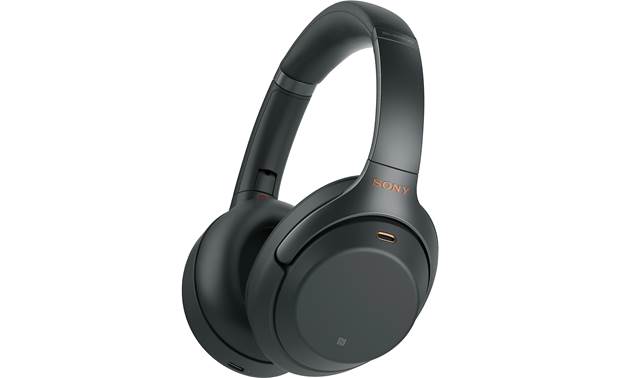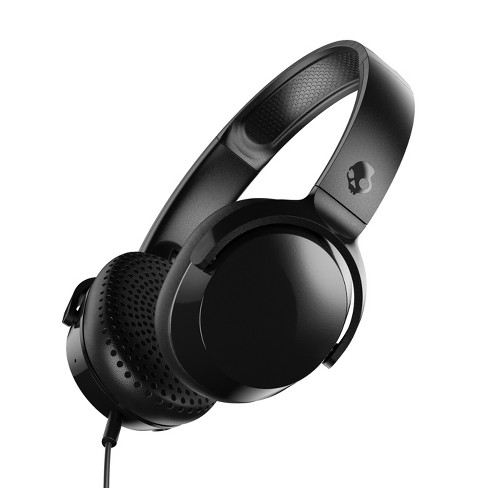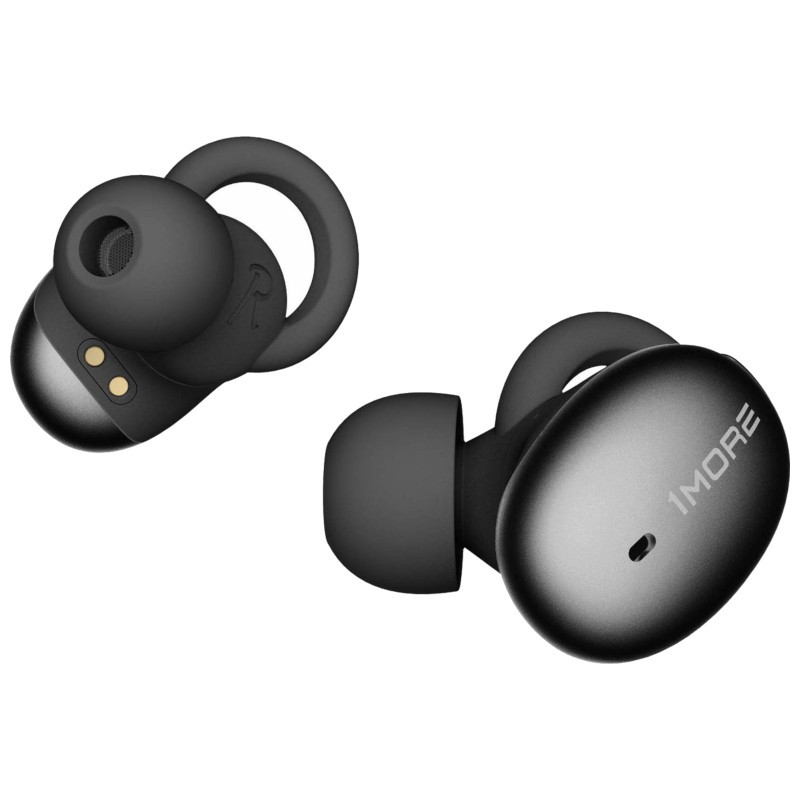At some point in our lives, there were about two or three shapes of headphones on the market, and the process of choosing your best fit wasn’t as cumbersome as it is now.
With the leap in technology, the introduction of gaming sets, and the idea of wireless gadgets invading the industry, headphones have been changing shapes and incorporating new features for distinct tasks.
While some may have undistinguishable differences, others are like the night and day. We’re here to clear the fog and introduce you to the popular types you’re going to encounter while shopping online or in stores.
Contents
The Four Main Types of Headphones
There’s nothing that strictly says there are primary and secondary types of headphones. However, we’re breaking them into four main types in an attempt to make it easier for you to point out which type you should go for.
1. Over-ear

Let’s begin with the shape that jumps into our minds the moment we hear the word “Headphones.”
Over-ear headphones, also referred to as circumaural or full-size headphones, are the largest and heaviest type of the bunch. They hold the classical shape of two big cups connected with a band that goes around the head.
The earpieces cover the whole ear tightly so that there is no chance for any sound leakage. Hence, they provide superior sound isolation, allowing you to enjoy whatever you’re hearing without external disturbance and sparing your surroundings the noise coming from your headphones.
Regarding sound quality, they’re one of the best as they respond well to even the lowest frequencies. Due to their big-cup design, there’s a large room for the sound to reflect, so the soundstage is incredible.
That means you can simply close your eyes and imagine the direction from where every tone is coming. And in case of gaming or editing a video, you’ll be able to hear the faintest footsteps or the air around the hand of your avatar.
Folks who wear their headphones for prolonged times will find this type the most convenient. Their cushioned earpieces are gentle on the ear, and their bands are adjustable so that they can fit directly on your ears.
However, with all these merits, come a few drawbacks. Being the bulkiest style, they’re not travel-friendly, and thus they’re preferred for home or studio use only. Due to their heavy weights, they can slip from around your head if you move around with them, and their prices can put a burden on your pocket.
Furthermore, it’s common that your ears will sweat with this type, as it doesn’t allow the air to reach below the ear cushions. Besides, it won’t fit under a helmet or a hat if you’re a biker or just like wearing beanies and bucket hats.
2. On-ear

This type takes a smaller size than over-ear headphones while reserving the same around-the-ear shape.
In terms of portability and comfort, they represent a middle-ground between the former type and in-ear ones, but they’re inferior in sound quality. That’s because their design allows for the air to pass between the ear and headphones, thus opening a space for some sounds to escape.
However, that doesn’t eliminate your chances of finding a high-quality one with minimum noise leakage.
Although their bass responses aren’t as outstanding as that of over-ear headphones, they’re preferred by more people, as they’re easier to carry around and use outdoors. Thanks to their light weight, they tend to stay in place, so you can use them while running or jumping the rope without worrying about them slipping.
Like over-ear type, the padding can get wet from sweating and irritate your ears, but they’re still popular with sportsmen, as they create less pressure on their eardrums.
Last but not least, they come in eye-catching designs and alluring colors, so you’ll find them with people in gyms, casual commuters, and pedestrians on the street.
3. In-ear

The highlight of this era is that everything is getting smaller, so why stop at headphones? What makes this type stand out is that it combines portability, comfort, and usability, all in a small and compact package. That’s why it’s the most well-known type in our days.
Unlike the previously mentioned headphones, these get inside your ears so that the sound is the closest to your eardrums. They’re like earplugs but with the option of producing sounds. Consequently, they have second-to-none sound isolation, providing an extraordinary listening experience.
Although their sound quality is comparable to that of over-ear headphones, they have inferior soundstage due to the limited space in which the sound travels.
In-ear headphones may not be a suitable choice for studio editors or music producers, but they’re definitely an important item in everyone else’s pockets.
They are, hands down, the first choice of fitness people and gym residents, owing to their portable sizes. Bikers also prefer them, as they don’t get in the way of their safety helmets.
Despite their popularity, they have a few disadvantages. For instance, they come with fragile cables that tend to get bent and cut easily, thus affecting their longevity.
On top of that, they can cause ear damage if you raise the volume beyond 70%. You’ll also notice that they increase the production of ear wax, which happens as a defense mechanism by your ears against foreign bodies like headphones.
4. Earbuds

Although this term is used usually to refer to in-ear headphones, there is a difference between the two types.
Earbuds are less invasive as they stay in the ears’ outer shell instead of going inside. When it comes to convenience, they’re not on top of the chart because they tend to fall out easily. The fact that they come in only one size doesn’t help in this problem as people’s ears have different sizes themselves.
As one of the oldest and most basic headphones, there’s nothing worth praising about their sound quality and isolation, yet they come at affordable prices that reserve them a place on the market to this day.
Special Features
Companies have been tailoring headphones to suit individual requirements. Hence, you’ll most likely pass by these terms that may look unfamiliar if you’re not a music enthusiast or a studio artist.
Open-back vs. Closed-back
We should note that this differentiation concerns the over-ear and on-ear types specifically.
The back design of ear cups can make a wild difference in sound quality. For instance, closed-back headphones ensure that you have a sealed box around your ear that shuts out the whole world and strictly prevents the audio from leaking.
Normally, musicians, vocalists, and users looking for inviolable privacy would lean toward this choice.
On the other hand, open-back headphones offer a listening experience similar to that of live concerts. They allow for audio leakage, giving more space for the sound to resonate, and in turn, improves soundstage.
While they may not like your first option considering the little privacy they offer, they’re what audio engineers and music producers strive for, as they give them a true feeling of the sound.
Wired vs. Wireless
Since getting rid of wires has been the new era’s style, all headphones’ types have a wireless version in stores. Instead of the usual cable and audio jack you use to connect the headphone to your smartphone or laptop, wireless ones offer fast connection via Bluetooth.
For this pairing to happen, wireless headphones integrate small chips that allow for this wireless connection. Although this technology has been out for years now, it’s still quite expensive. Yet, many people are switching to them in order to spare themselves the hassle of carrying a cable around.
Which One to Choose?
When all is said and done, choosing a headphone comes down to the purpose you’re using them for and your personal preferences.
If you’re a gaming geek or a passionate audiophile, you’ll need headphones that surround your ears completely, produce high volumes, and have unmatched bass responses. Over-ear closed-back headphones will enable you to jump into another world and experience whatever you’re listening to in some form of an alternative reality.
For home use, you can choose either on-ear or over-ear headphones, depending on the level of privacy you want.
As for kids, on-ear headphones come in different sizes and shapes that children find amusing. Besides, they’re the safest option as they maintain a safe distance from the kids’ eardrums; thus, creating less pressure on their ears.
Finally, for traveling, cycling, and gym trips, nothing beats a good pair of in-ear headphones.
